Susan's Blog - Cozumel San Miguel
There is really only 1 town/city on the island, that being San Miguel. This is where the majority of the island's population lives (a bit under 80,000 people), as well as the airport and ferry service to the mainland. There is also an International Pier for cruise ships which is large enough to accommodate 2 large cruise ships at a time. We could see these ships from our breakfast area on the beach, and our Scuba guide talked about the cruise ships coming in every day (except Sunday).
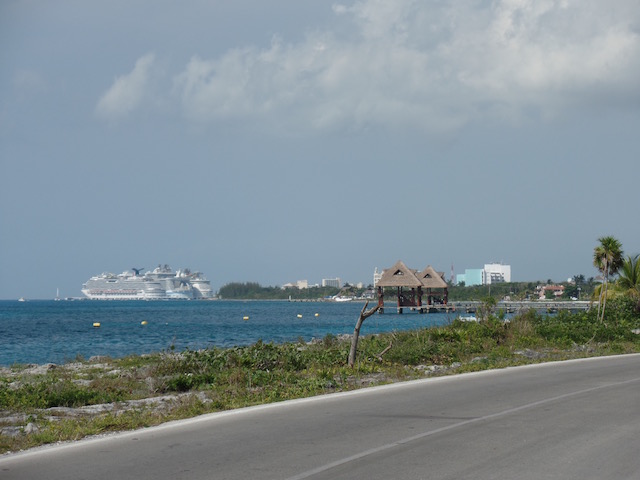
Tried to get a couple pictures just to show the vegetation ... there is some amount of scrub grass in the rocks on the water-side of the road and then just low jungle-type vegetation on the interior.
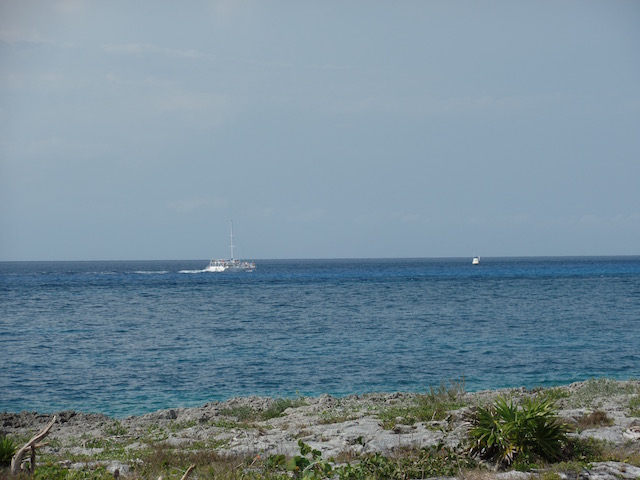
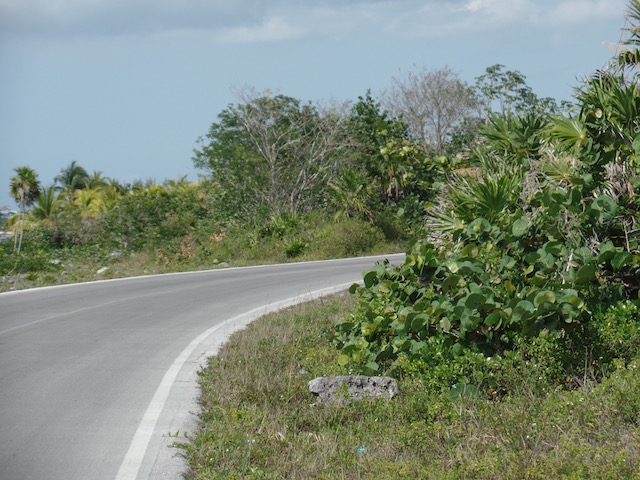
Right downtown, you'll find the San Miguel Church (Iglesia de San Miguel). This small Catholic church has quite unusual architecture and several sculptures inside. It is believed to date back to the 16th century.
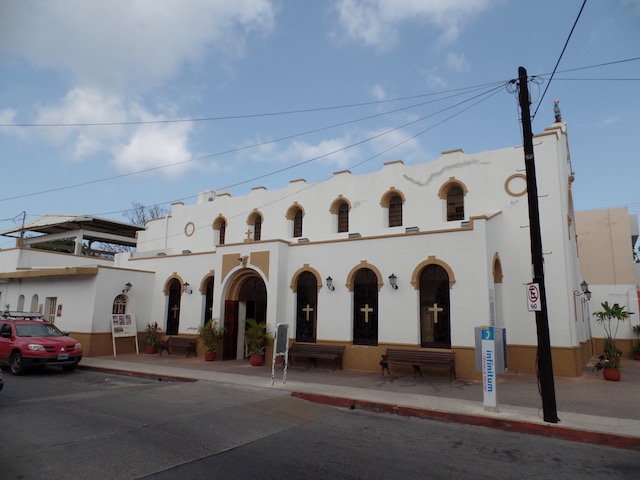
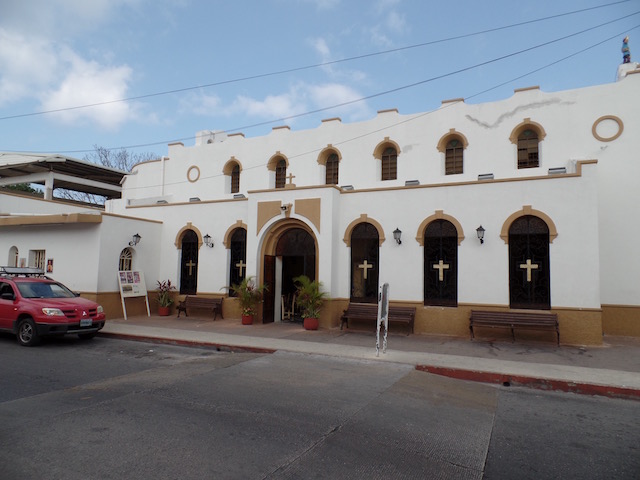
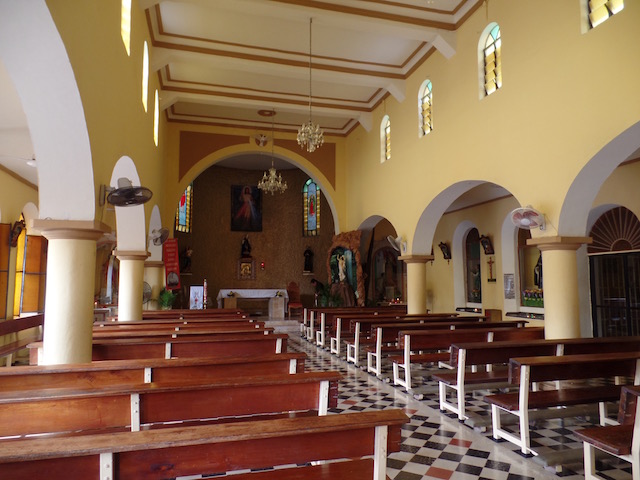
Also in the downtown is El Zocalo or "The plaza". Within the plaza is a bronze sculpture of Benito Pablo Juarez Garcia, who was a Mexican lawyer and politician who was the president of Mexico for five terms: 1858-1861 as interim, then 1861-1865, 1865-1867, 1867-1871 and 1871-1872 as constitutional president. He resisted the French occupation of Mexico, overthrew the Second Mexican Empire, restored the Republic, and used liberal measures to modernize the country. He is most known for his efforts as a progressive reformer who dedicated his life to democracy, equal rights for his nation's indigenous peoples, his antipathy toward organized religion, especially the Catholic Church and what he regarded as defense of national sovereignty. During his leadership, this period is known in Mexican history as La Reforma del Norte (The Reform of the North) and constituted a liberal political and social revolution with major institutional consequences: the expropriation of church lands, the subordination of the army to civilian control, liquidation of peasant communal land holdings, the separation of church and state in public affairs, and also the almost-complete disenfranchisement of bishops, priests, nuns and lay brothers.
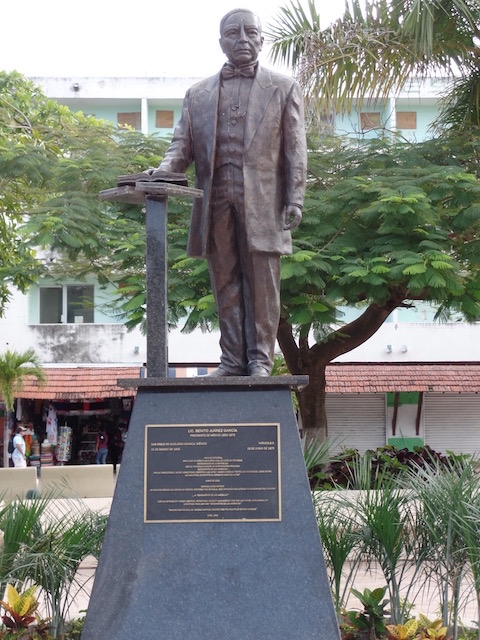
In the middle of the square is "Point Zero" or Punta Cero.
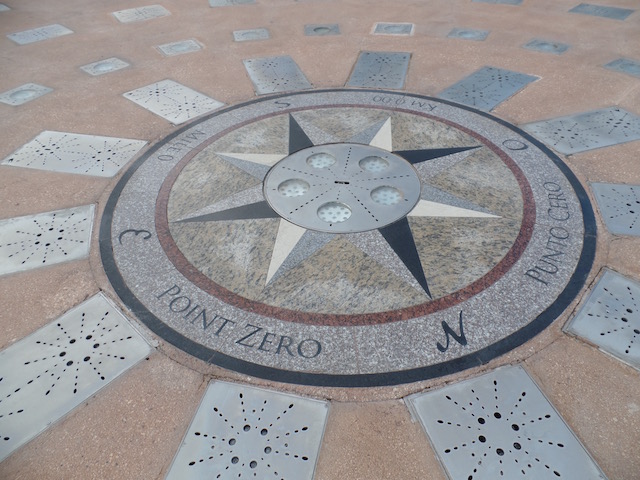
One one side of the square is a very nice little Clock Tower.
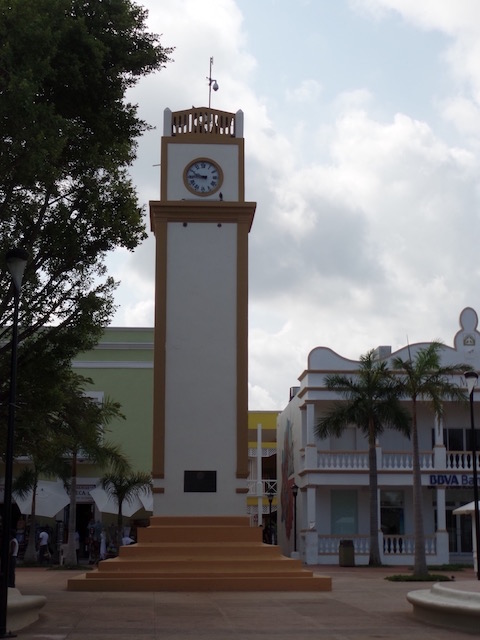
Tom grabbed a picture of me hidden in the middle of a large Isla Cozumel sign.
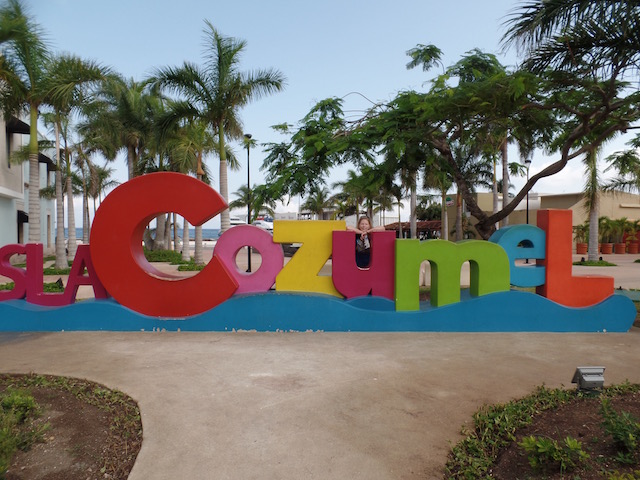
Then along the water, there was a large Mexican flag, flanked by two large eagles.
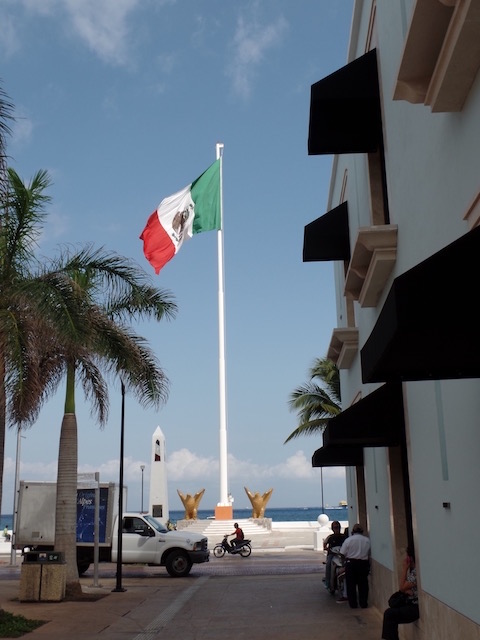
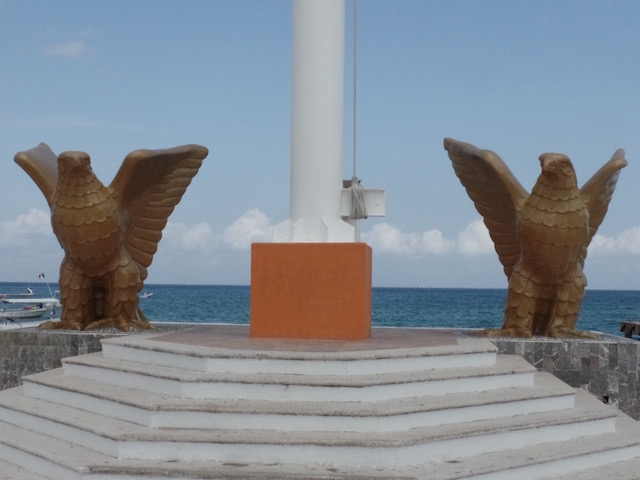
The ferry terminal with two ferries that shuttle people from the mainland over to Cozumel.

And of course, what else would you find on an island of less than 100K people? A Cartier shop of course!
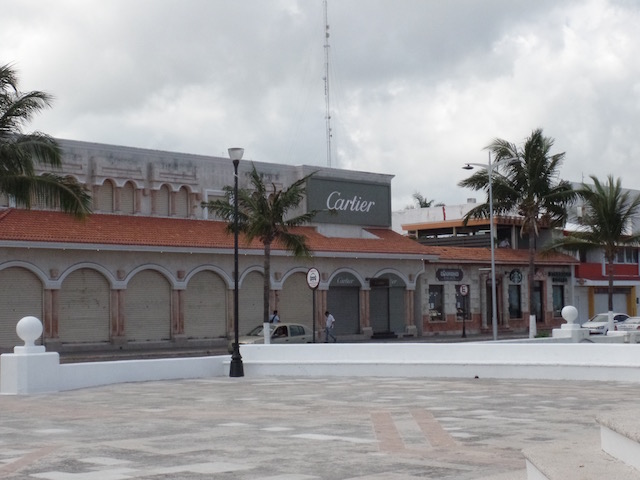
This is the Coral Reefs Monument on the waterfront.
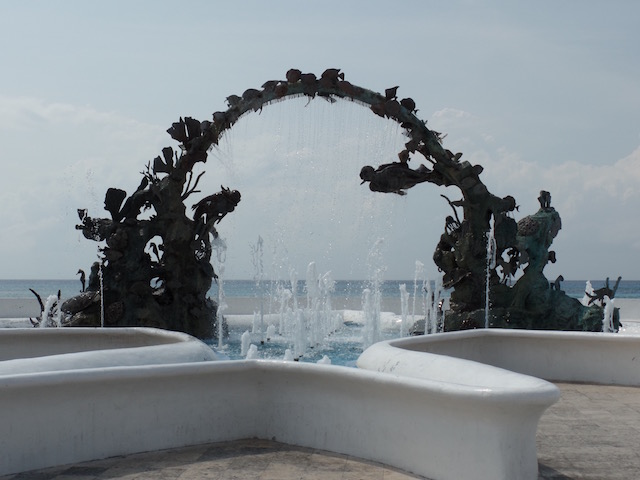
These pictures were taken at one point on the Northern part of the waterfront. Don't know what exactly it is, but it looks quite interesting. The painting on the columns is pretty recent since if you look at this part on Google maps, the columns are not painted so colorfully.
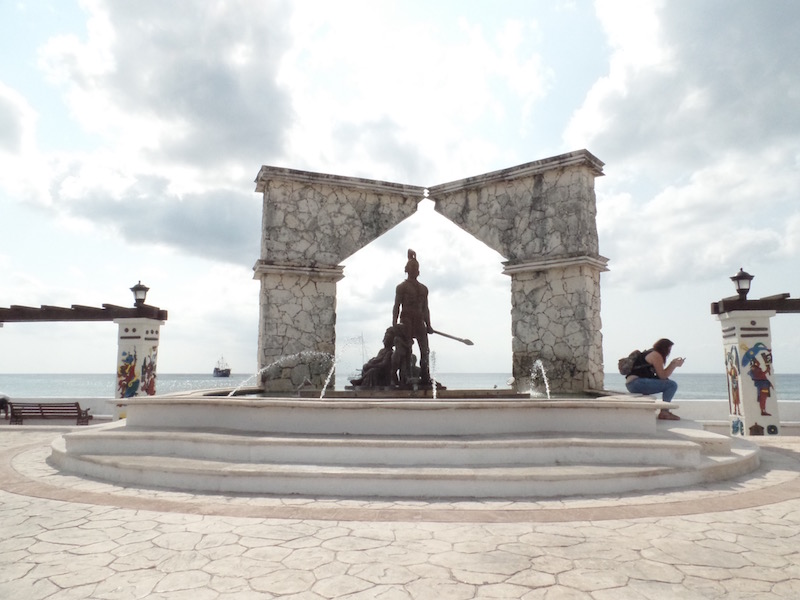
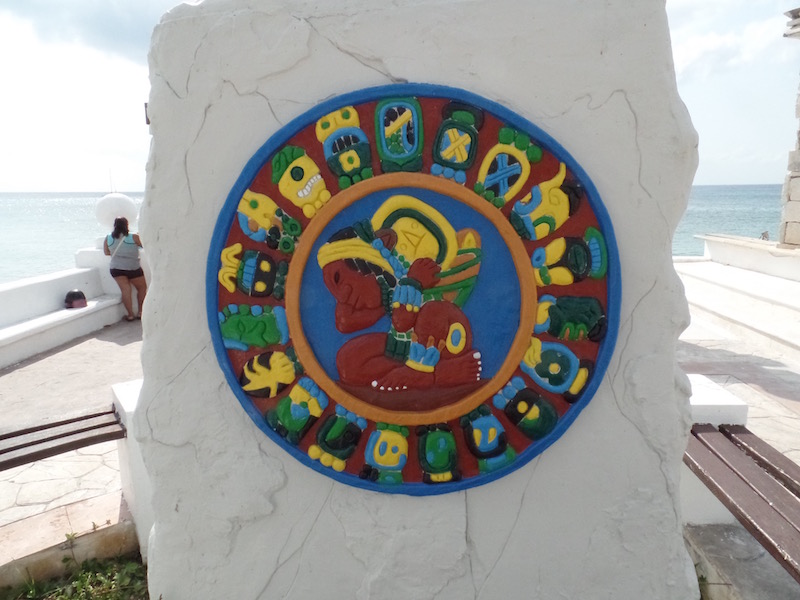
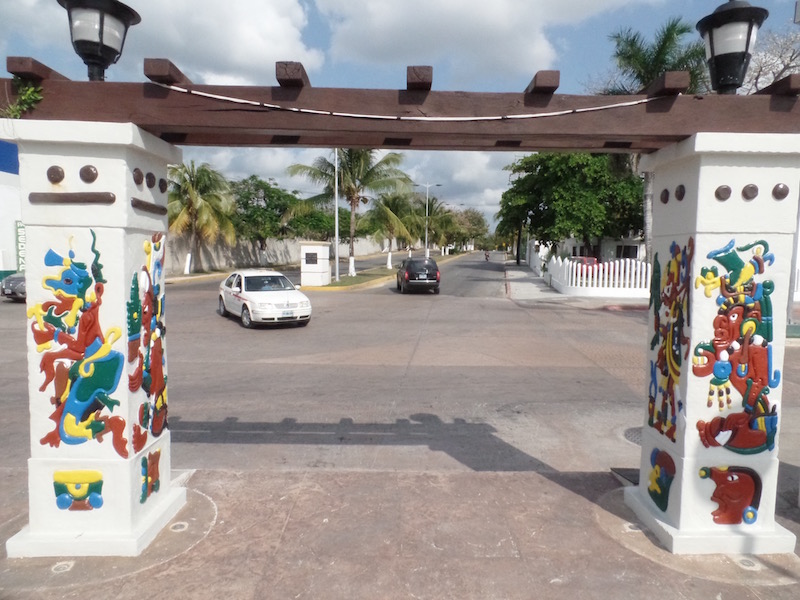
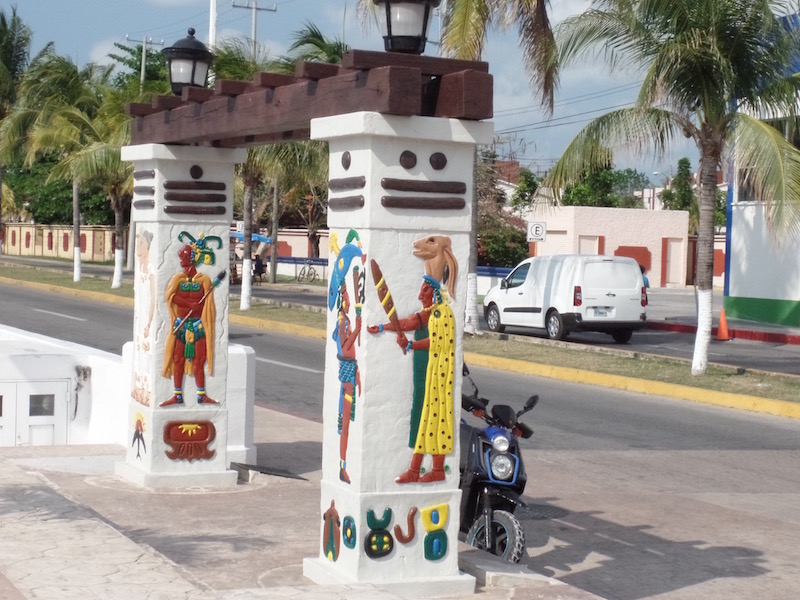
Now to the cooking class. Yes ... we went to Mexico and took a cooking class! We decided on Josefina's Cocina Con Alma cooking school due to its' great reviews on TripAdvisor and their quick response to my email inquiry. Unfortunately, Josefina's health is not so good right now and so she wasn't available. However, one of her long-time assistants was there as well as a gentleman who ran the class for Josefina. There was supposed to be another couple with us, but they never showed up so we ended up with a private class. While we waited for the other couple, we hung out in a garden behind the house, with our lizard friends and a turtle or two.
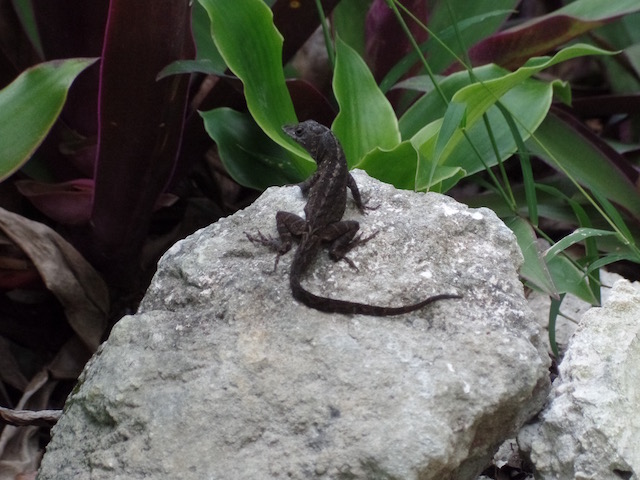
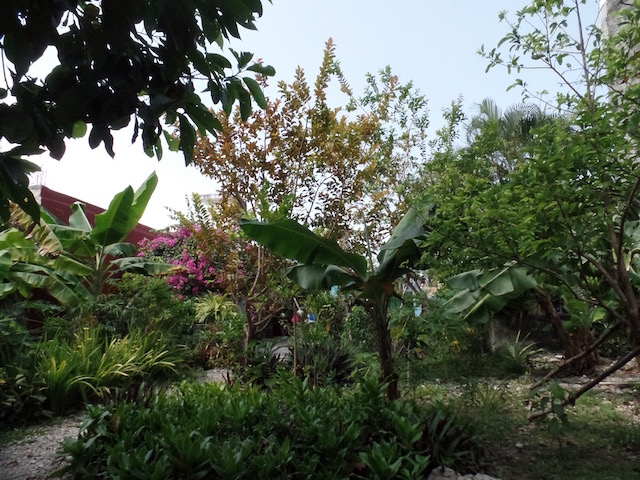
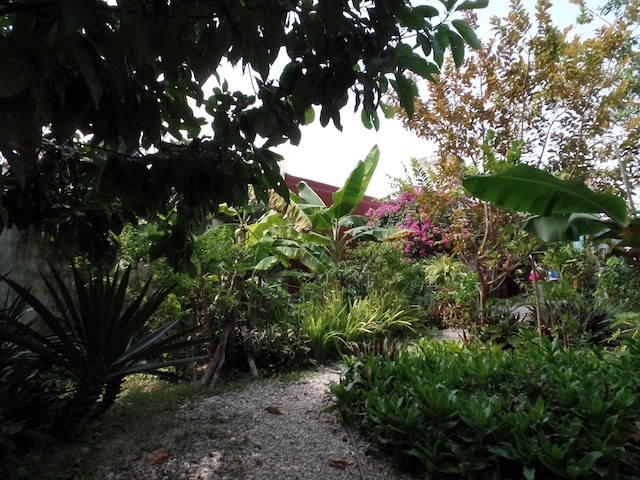
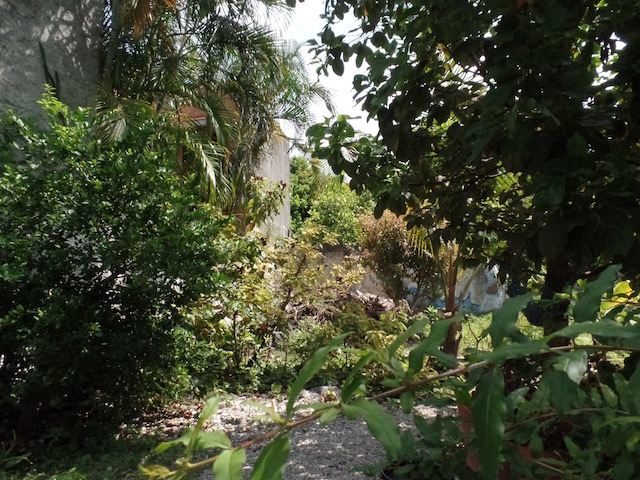
Josefina started the cooking classes a few years back after working as a language teacher for 35 years in Veracruz, Mexico City, and Cozumel. The gentleman who was giving the class mentioned that she rented the house that the classes are given in because it was close to the local market. The recipes that she has (which are in a small cookbook that we purchased) are "old recipes from kitchens of mothers, grandmothers, and aunts" (her words) that she is trying to save.
We first picked a main course from a cookbook that we would cook (Pork in Guajillo Sauce) and then headed to the local market, which was just a couple blocks away. I would suspect that some people may have been a little worried about the food at the market (like meats) but having gone to markets in Southeast Asia ... this was actually a very CLEAN little local market!
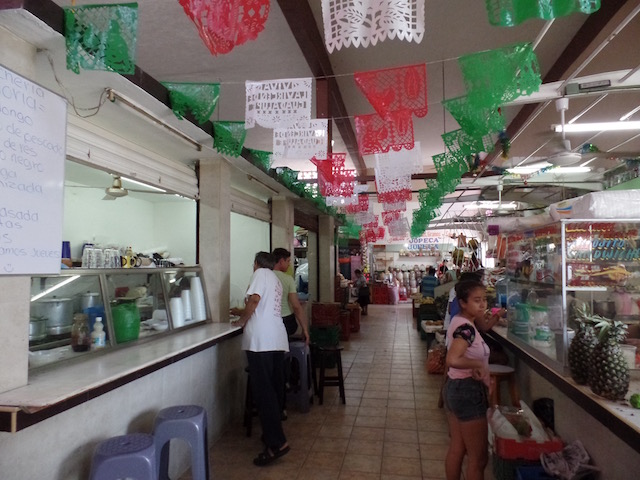
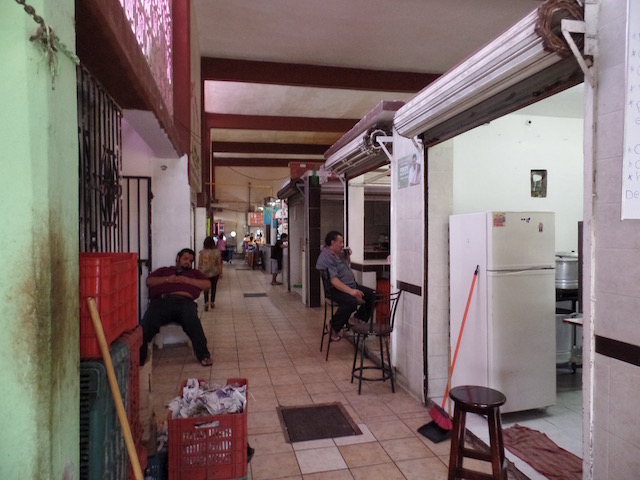
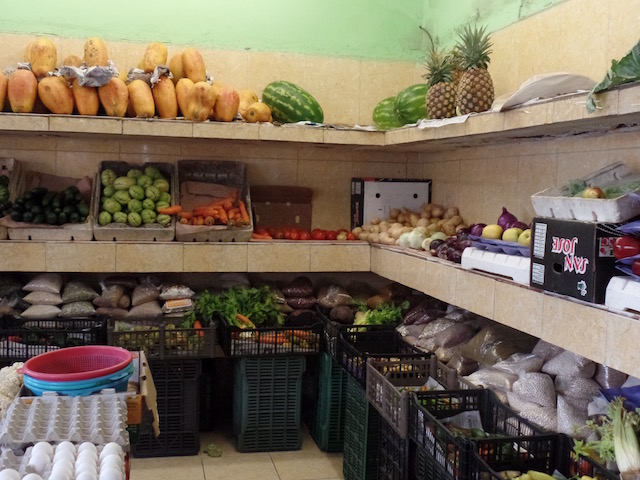
First up was Agua de Jamaica or Hibiscus Flower Water. She mentions in the cookbook that this might be the most famous drink in Mexico. You boil dried hibiscus flowers for 10 minutes, let it cool, then strain the flowers from the water. You then add more water and sugar (to taste) and serve.
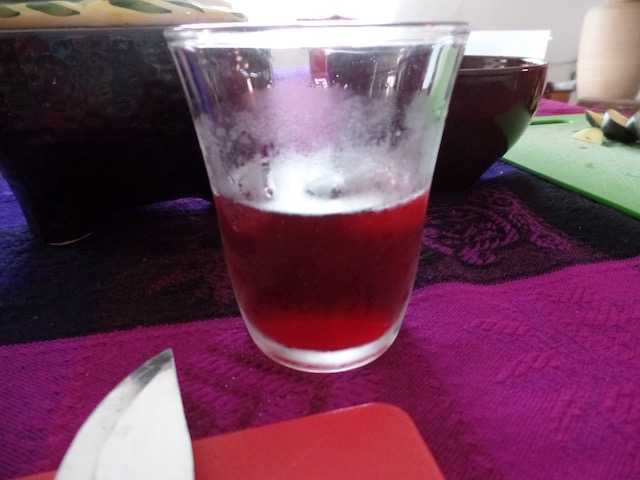
We then started preparing our first recipe. We bought the squash at the local market, what he called "Mayan Squash". However, a bit of googling shows that what they list as mayan squash is really more round and this was a bit flatter, almost more like a Scallop Squash or a Pattypan Squash although the recipe calls for Chayote or zucchini. Anyway, we diced it up and put it into a little ceramic dish on the stove along with some vegetable oil, chopped onion, chopped garlic, and a little bit of chicken bouillon. We then covered it and let it cook until the squash was tender. When soft, you grate on top some Gouda cheese and serve.
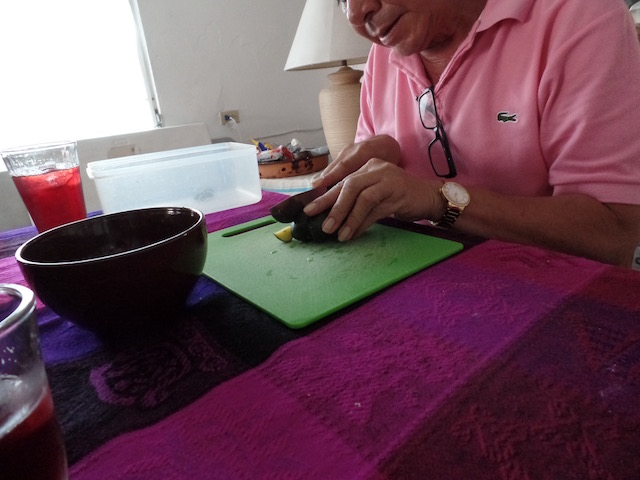
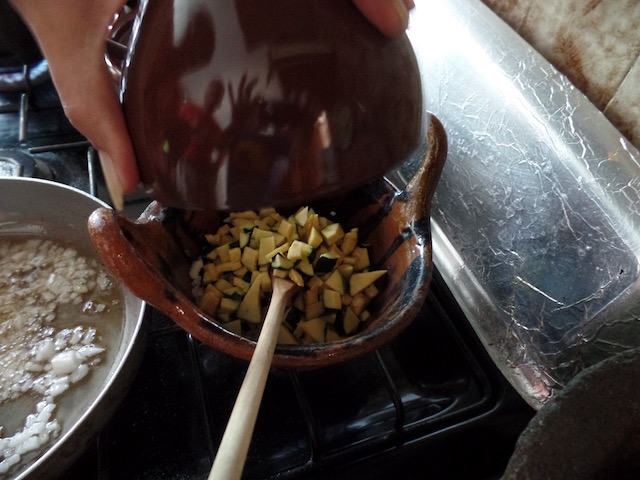
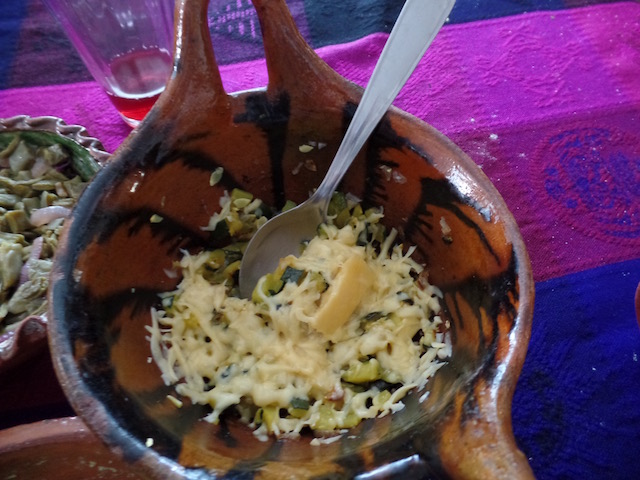
We also had Refried Beans made with black beans instead of pinto beans. You fry garlic and onions in oil (or lard, they say the best are fried in pork lard) until they are golden brown and then add already-cooked black beans. Then in the pan you basically mash them with a potato masher. We didn't smash them as much as what I think you see with refried beans here ... they were a little chunky.
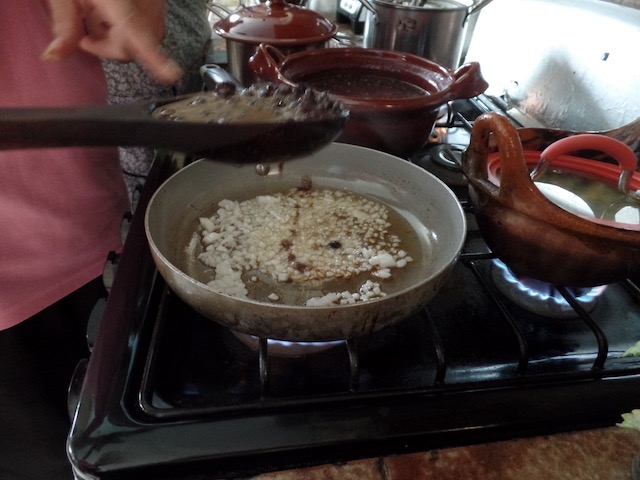
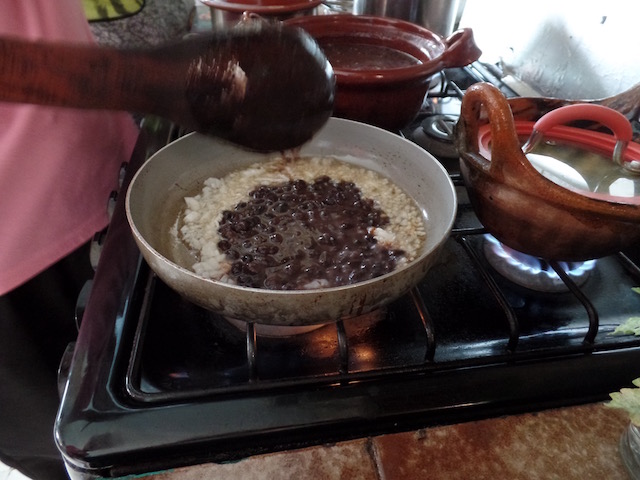
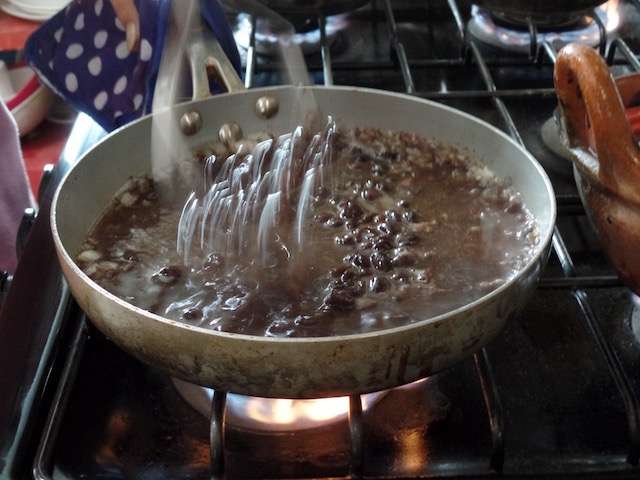
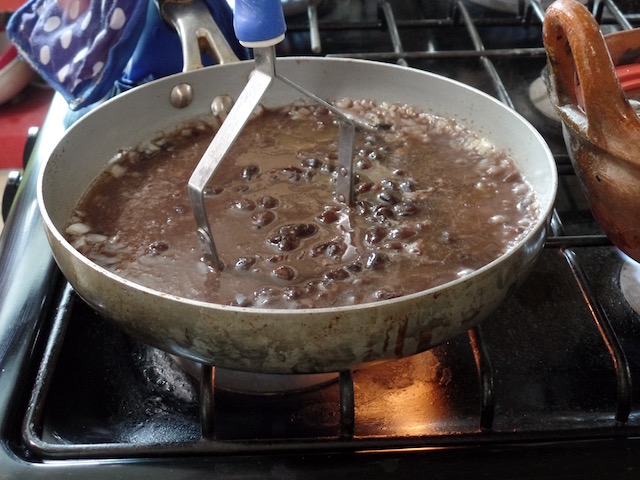
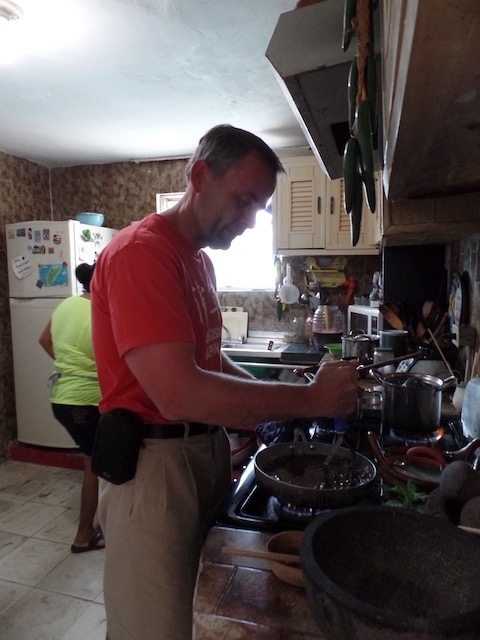
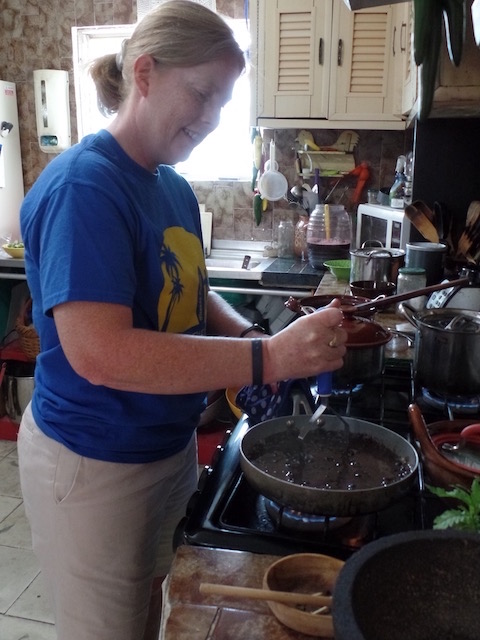
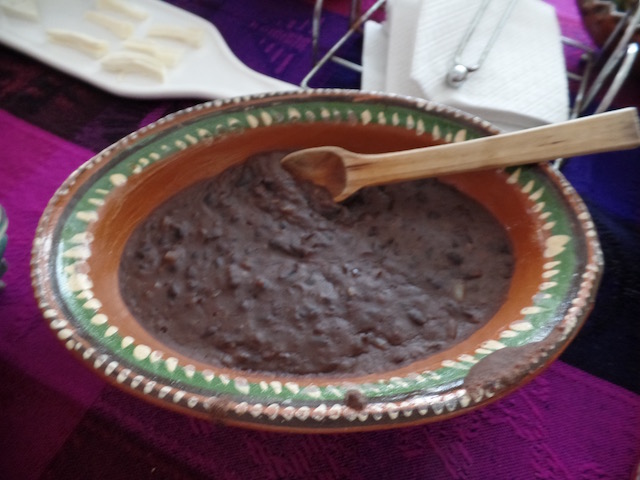
This is another sauce, with a mortar and pestle, Tom smashed a few cloves or garlic and then a Roma tomato which was blanched and peeled. Then we added a whole bunch of ground achiote spice.
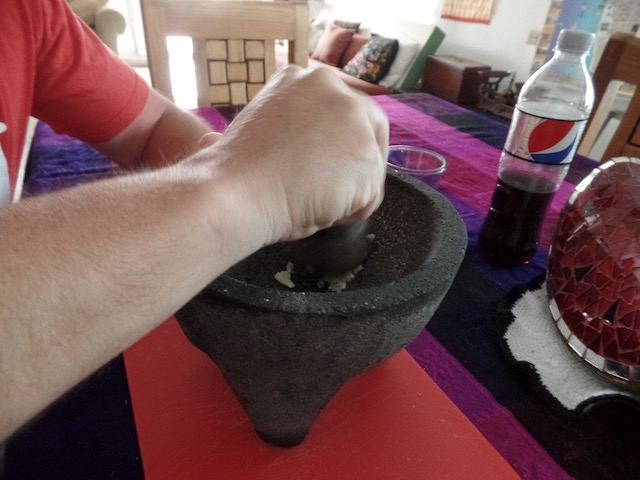
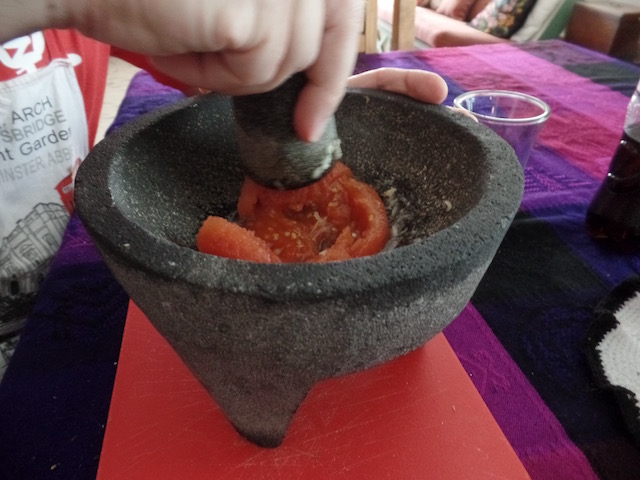
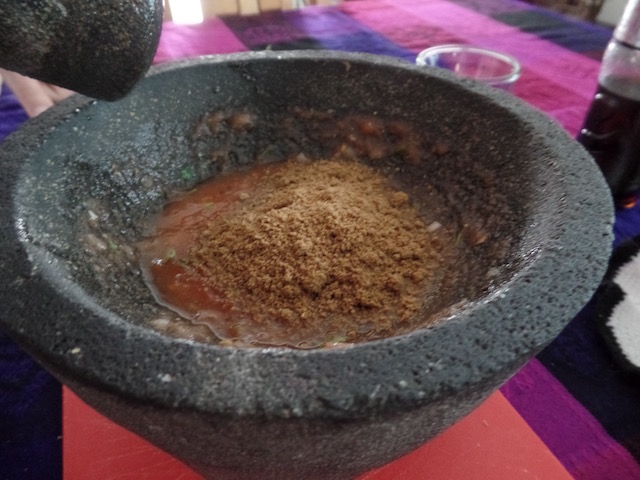
The main course that we picked was Pork in a Guajillo sauce. A guajillo is a variety of chile pepper that is used quite often in Mexican cuisine. It ranges from mild to hot. We picked up the pork at the local market and the butcher cut it into semi-thin pieces. Those were then boiled until the pork was soft along with a bay leaf, cumin, thyme, rosemary, oregano, and chicken bouillon. We then heated some oil in a pan and added the dry guajillo chile (seeded) and when done, put it into a blender. Fry up a little garlic and sesame seeds in the same oil, and then put them also in the blender along with a bit of the pork broth and blend until smooth. Put the sauce and the pork together in the frying pan and cook a bit longer.
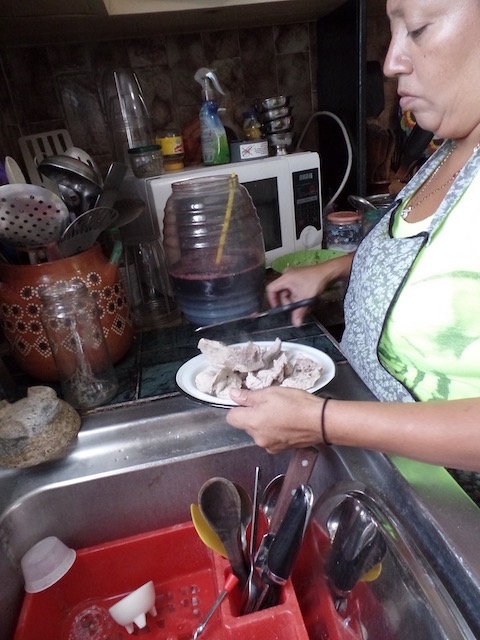
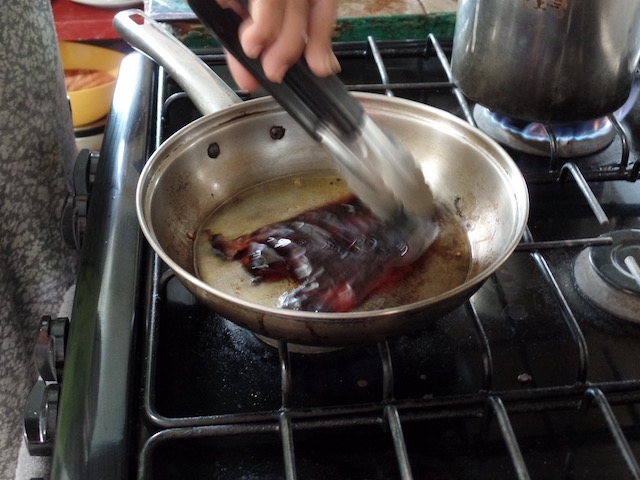
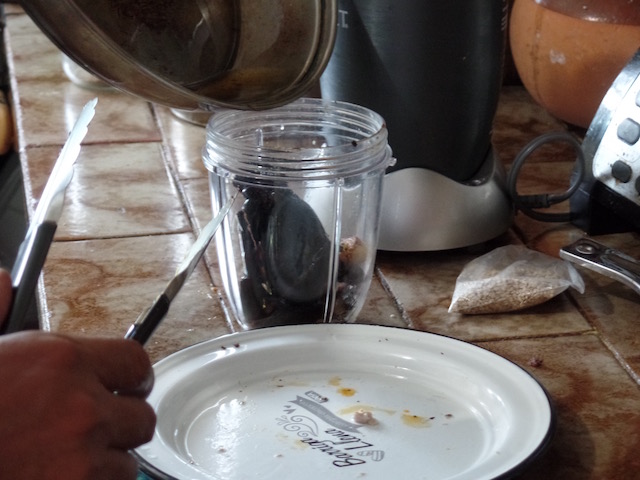
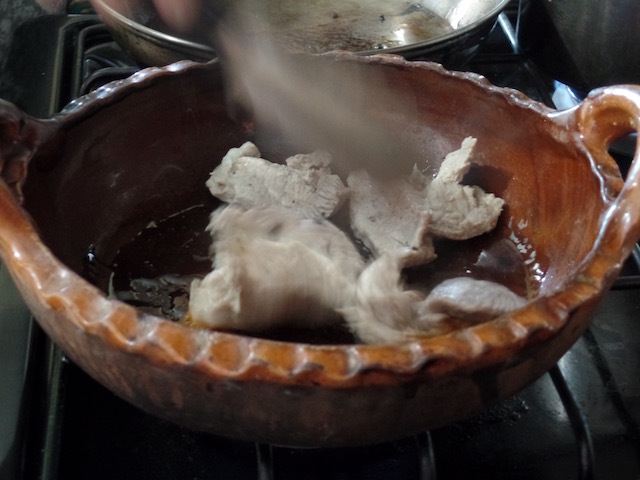
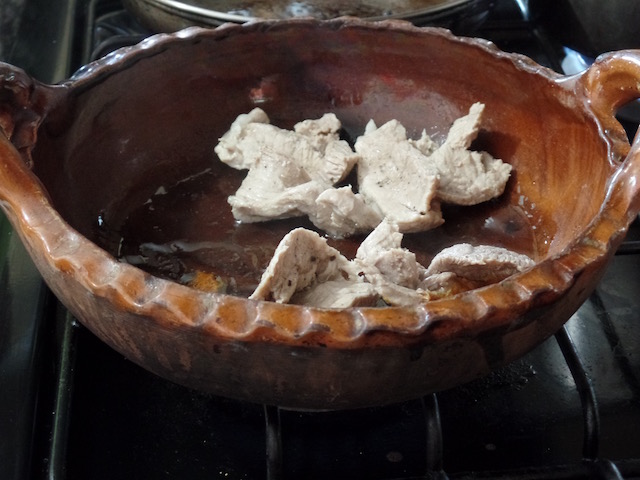
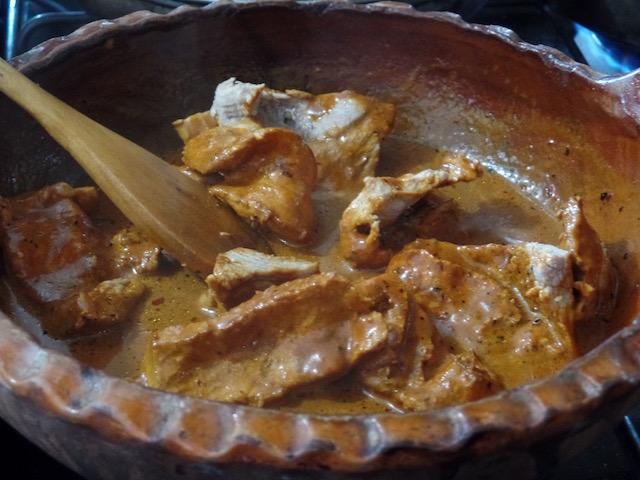
Now, the guacamole. This is a different recipe than I had ever seen, but it was very good as well. You take the guacamole out of the skin (he did it in quarters instead of just cutting in half and then using the knife to get the pit out, which is how I normally see it done) and then mash it with a potato masher. Then we added chopped cilantro, a bit of chopped onion, a spoon of Crema, lime juice, minced garlic, salt and pepper, and a little bit of serrano or jalapeño chili (remove the seeds to remove the heat).
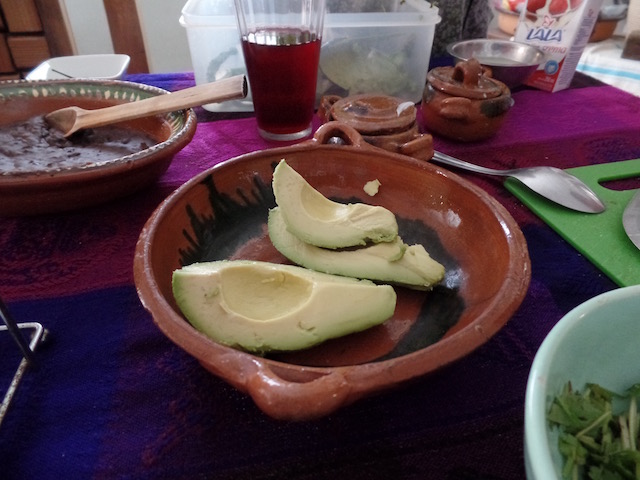
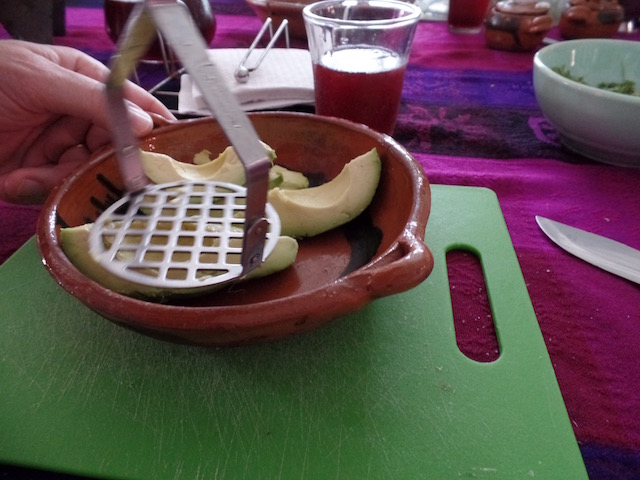
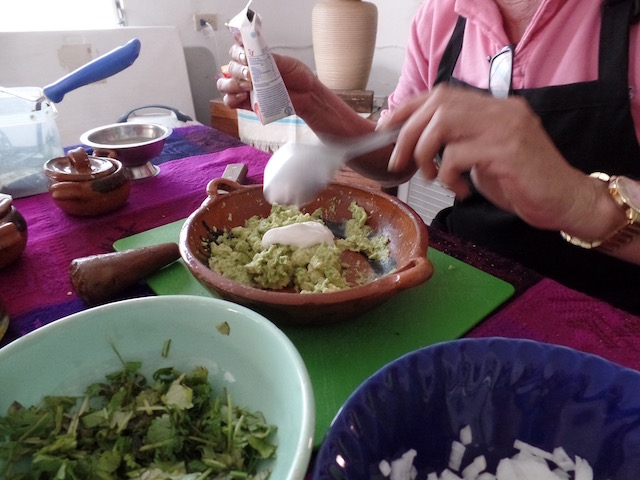
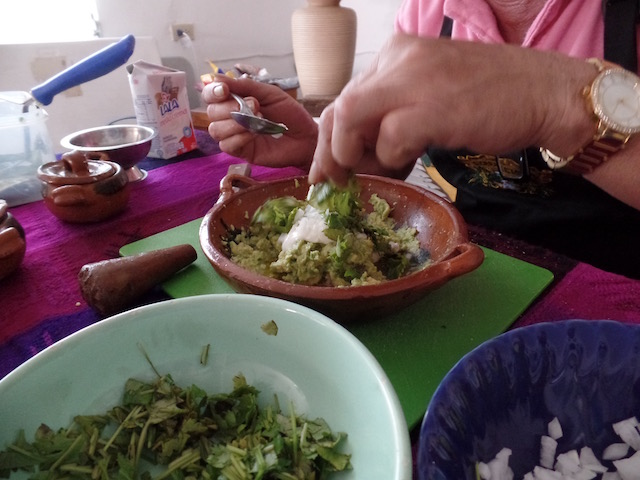
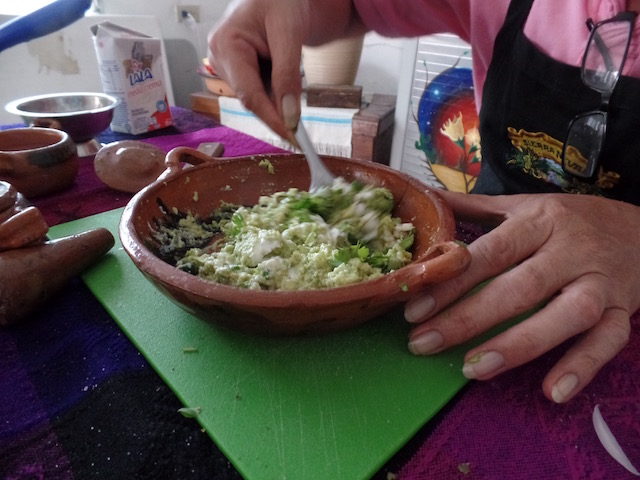
When we went to the market, we stopped by a tortilla maker on the way back and got to taste one of their corn tortillas fresh off the machine. They take the tortilla mix (which is just corn flour and water) and put it into a machine which flattens it and cuts the circles out, which fall onto a belt that goes through an over to just quickly cook them. They are very soft and supple, not like most of the corn tortillas that we get here, plus the flavor is slightly more mild .. perhaps a slightly different type of corn since they were also less "yellow". Then we got to make our own! Josefina's assistant mixed the corn flower and water in a bowl to get the right consistency and then gave us each a ball and a piece of plastic. We then proceeded to follow her lead to flatten it out in a nice little circle.
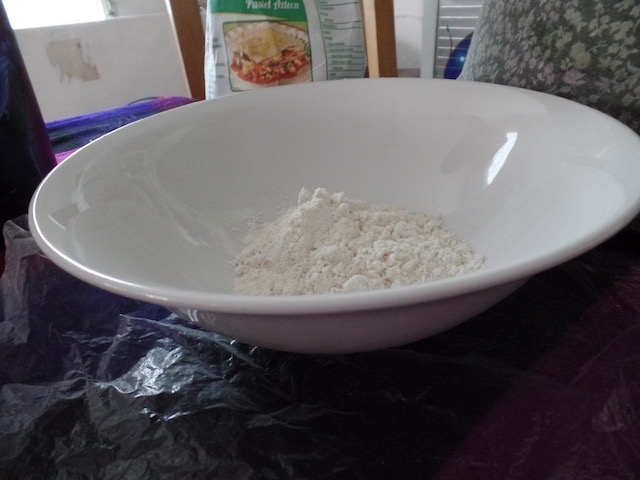
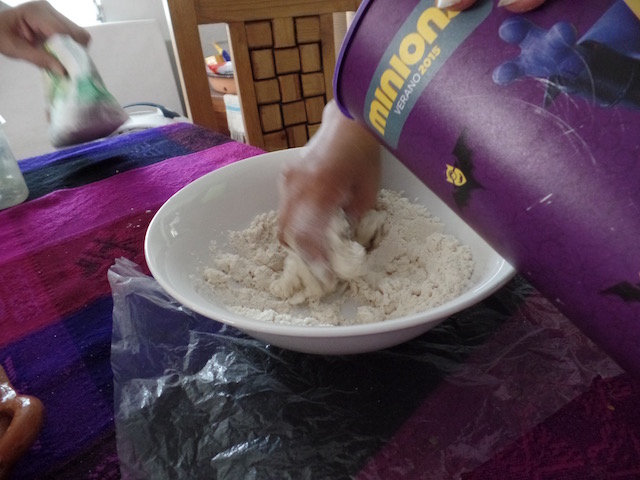
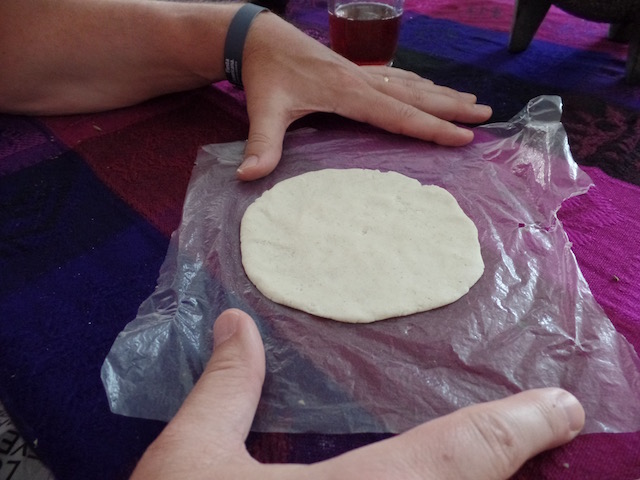
We then popped them on a large griddle on the stove and cooked them on one side, then flipped them. She then put some Mexican string cheese (the recipe says Oaxaca, Chihuahua, Manchego, or Mozzarella cheese) and a leaf of Epazote in the middle and folded them over to melt the cheese. Voila ... Quesadillas! Epazote is something I had never heard of before ... and I didn't really taste much of it when we ate the quesadilla, which after reading up on the web what it is, I'm kinda glad! Epazote is a Mexican herb that has a very strong taste and sometimes has a gasoline or perfume type odor (nice!). It has been used in Mexican cuisine for thousands of years dating back to the Aztecs who used it for cooking as well as for medicinal purposes. Although epazote is poisonous in large quantities (WHAT!???!!), it has been used in moderation to help relieve abdominal discomfort (gassiness) that can come from eating beans. It has become a distinct flavor in Mexican cuisine and is now used to season a variety of dishes including beans, soups, salads and quesadillas. The older leaves have a stronger flavor and should be used sparingly. Younger leaves have a milder, yet richer flavor.
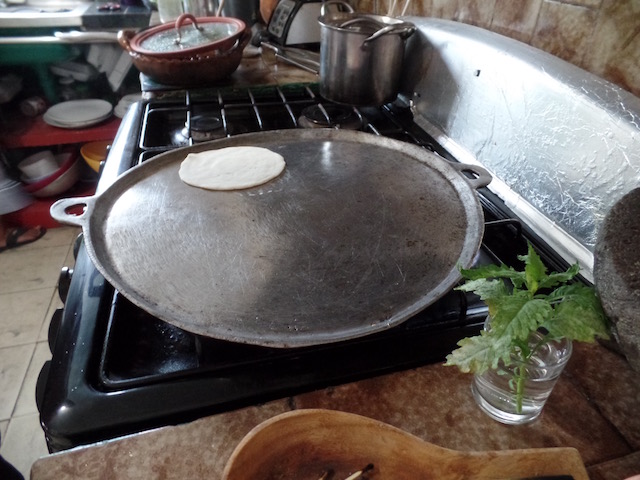
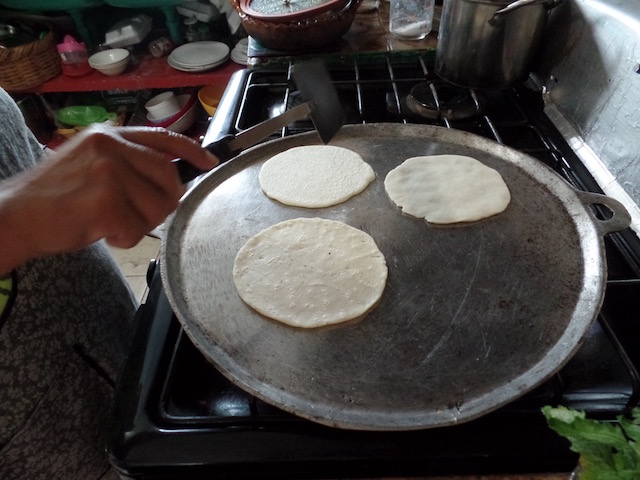
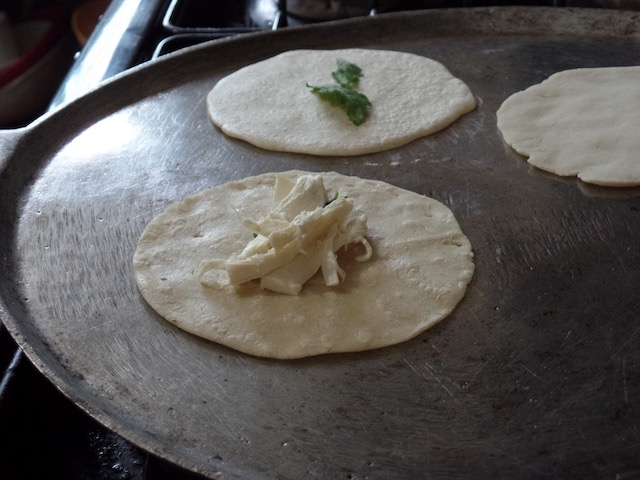
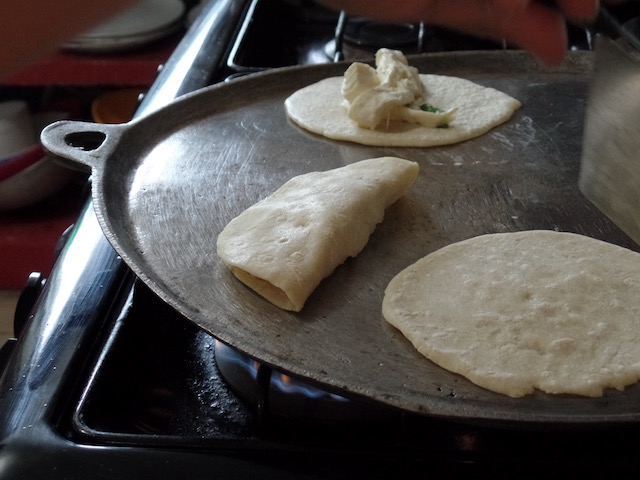
This dish is called Fried Nopales, and I have to admit, it wasn't my favorite. Part of it is maybe that I knew what it was made with ... specifically ... cactus leaves. Perhaps I should give it another try though, since the cookbook says that there is scientific evidence that Nopales (cactus leaves) prevent and cure many diseases such as cancer, diabetes, ulcers, and others. So you take the cactus leaf and you have to scrape the spines, thorns, and eyes off with a knife on both sides. Then you dice them up and wash them. In a pan, heat oil and add the diced Nopales, cook for 10 minutes. Then add diced onions and cook another 10 minutes. Then you can add Chile de Arbol for a bit of a kick.
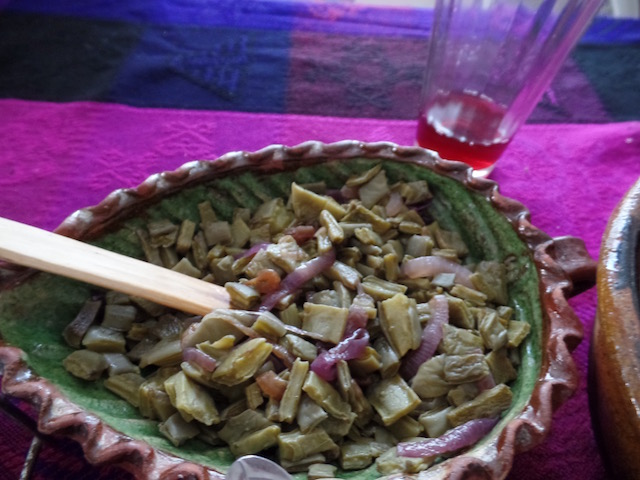
A plate of 2 different types of mexican cheese ... these were VERY mild in flavor.
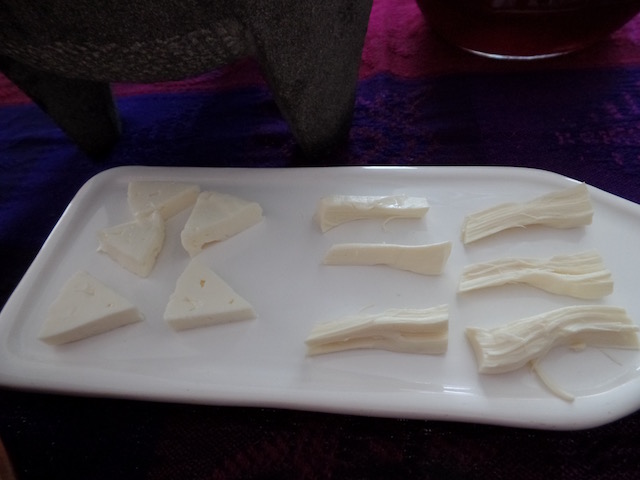
This was our salsa, which was really good. Mind you, I always thought that the chunkier the salsa (more like pico de gallo), the more authentic (good) it was. However, this was was basically made in a blender. You boil the tomatoes but don't peel it. Then toss the tomato, garlic, onion, a bit of serrano chili into a blender and blend for a minute. I was surprised that there was no Cilantro in it, since we always see cilantro, but not in this salsa.
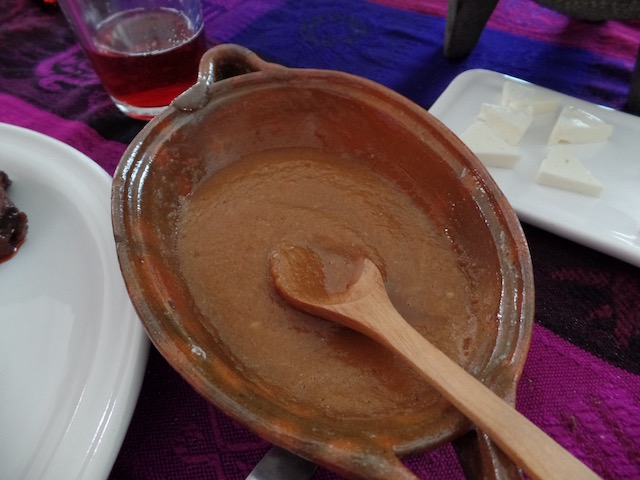
This one was really good although you wouldn't think of putting these two together ... Mango & Cucumber salad. You peel and dice both the mango and cucumber (the recipe calls for 3 mangoes and 1 cucumber) and add the juice from 2 limes and a bit of salt to taste, then refrigerate. When you are ready to serve, just add a bit of Piquin chili powder to taste and voila!
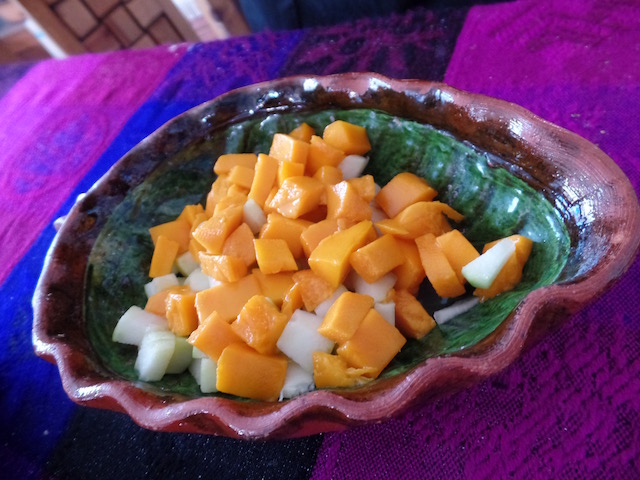
And we finished off the meal with a big Margarita!
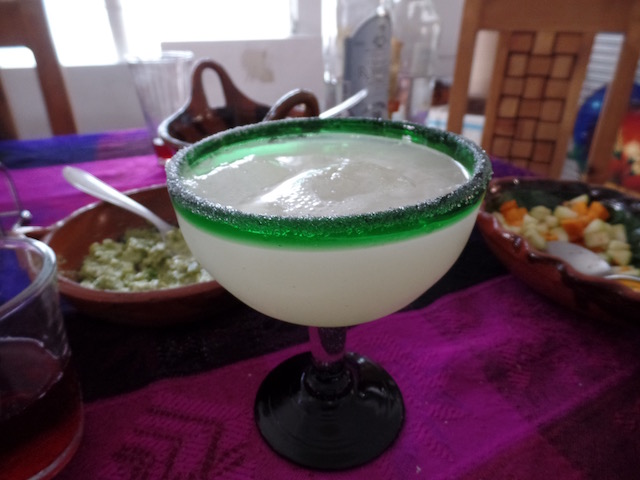
We did purchase the cook book, which was sent to us in PDF format .. so if someone is interesting in getting a copy, please let me know!